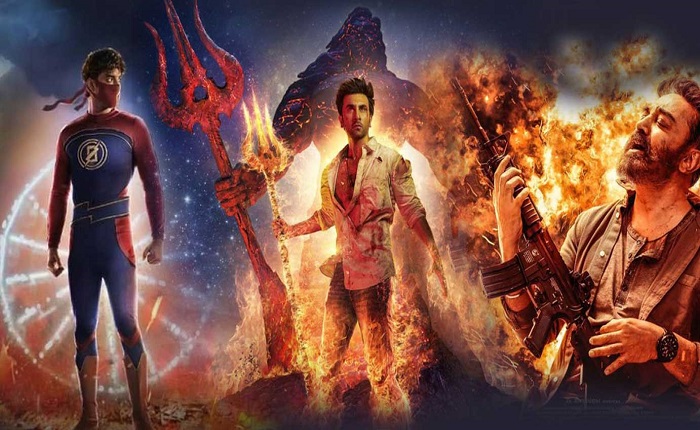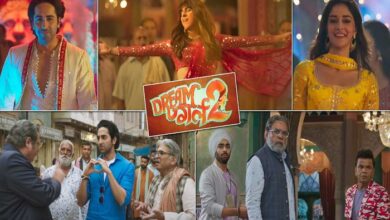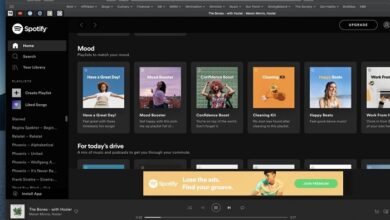The Magic of Bollywood Movies: A Deep Dive into India’s Cinematic Marvel

Bollywood, the nickname for the Hindi-language film industry based in Mumbai (formerly Bombay), is synonymous with vibrant colors, high-energy dance sequences, dramatic storytelling, and emotional depth. As one of the largest film industries in the world, Bollywood produces over 1,000 films annually, captivating millions of viewers both in India and across the globe. This blog post will explore the various elements that define Bollywood, the genres that dominate the industry, and the stars who bring these stories to life.
The History of Bollywood
Bollywood’s roots date back to the early 20th century, when the first Indian silent film, Raja Harishchandra, was released in 1913 by Dadasaheb Phalke. The industry blossomed in the 1930s and 1940s with the introduction of sound, and during India’s independence movement, films started to reflect nationalistic themes. By the 1950s, often referred to as the “Golden Age of Bollywood,” filmmakers like Raj Kapoor, Guru Dutt, and Mehboob Khan were producing socially relevant, highly artistic works that cemented Bollywood’s status as an influential film industry.
Bollywood vs. Hollywood: The Key Differences
Bollywood is often compared to Hollywood, but the two industries have distinct characteristics. While Hollywood movies are known for their concise storytelling, focusing on one or two main genres, Bollywood films are usually a mix of multiple genres—romance, comedy, action, and drama. Bollywood movies are also significantly longer, often spanning over three hours and including musical interludes, dance numbers, and elaborate set pieces. Hollywood might dominate global box offices, but Bollywood has a unique charm that appeals to its massive fanbase.
Genres in Bollywood Movies
Bollywood films cover a wide range of genres, but many are hybrids, seamlessly blending several elements together:
Romantic Dramas: Romance is central to many Bollywood movies, with iconic love stories like Dilwale Dulhania Le Jayenge and Kabhi Khushi Kabhie Gham becoming cultural landmarks.
Action Thrillers: Films like Sholay and Dhoom epitomize Bollywood’s love for action and adventure.
Comedy: Bollywood is no stranger to slapstick comedy, often combined with romance, as seen in films like Hera Pheri and 3 Idiots.
Musicals: Nearly every Bollywood movie is a musical, with song-and-dance routines woven into the narrative.
Period Dramas: Films like Jodhaa Akbar and Lagaan highlight the industry’s love for historical storytelling.
The Evolution of Bollywood Music
Bollywood music, or “filmi” music, is a defining characteristic of the industry. Over time, the style of Bollywood music has evolved. In the early years, classical Indian music influenced many soundtracks, while the 1970s and 1980s saw the rise of disco and pop sounds. Today, Bollywood scores are influenced by a fusion of genres, incorporating Western styles like hip-hop and electronic dance music while retaining traditional Indian melodies.
Popular playback singers like Lata Mangeshkar, Kishore Kumar, Arijit Singh, and Shreya Ghoshal have become household names, their voices forever associated with the stars they sing for. Each generation of Bollywood movies has had its own distinctive sound, but the songs have always remained an integral part of the storytelling.
The Importance of Dance in Bollywood
Dance is an essential element of Bollywood movies, often used to heighten emotions and add energy to the narrative. Bollywood dance routines are influenced by classical Indian dance forms like Bharatanatyam and Kathak, as well as folk dances from different regions. Over time, Western influences like hip-hop, salsa, and contemporary styles have been incorporated. Iconic choreographers like Saroj Khan and Farah Khan have created unforgettable dance sequences that have captivated audiences worldwide.
Bollywood Stars: The Icons of Indian Cinema
Bollywood has produced a galaxy of stars, each contributing to the industry’s massive success. Over the decades, actors like Amitabh Bachchan, Shah Rukh Khan, Madhuri Dixit, and Priyanka Chopra have gained global recognition. These stars are not just actors—they are often singers, dancers, and producers as well, making them multifaceted entertainers.
Actors like Rajinikanth, Salman Khan, and Deepika Padukone enjoy a cult-like following, with fans eagerly awaiting every new release. Bollywood’s star system is one of the reasons for its enduring popularity, as audiences form strong emotional connections with their favorite celebrities.
Bollywood’s Influence on Fashion and Culture
The influence of Bollywood extends far beyond the movie screen. Bollywood stars are trendsetters, and their fashion choices often dictate the latest trends in India. Iconic looks from movies like Kabhi Khushi Kabhie Gham or Hum Aapke Hain Koun have inspired entire fashion lines. Wedding outfits, in particular, are heavily influenced by Bollywood movies, with designers drawing inspiration from the glamorous costumes worn by actors.
Beyond fashion, Bollywood impacts social and cultural trends, influencing everything from the way people speak to the kind of music they listen to. Its impact is particularly strong in the Indian diaspora, where Bollywood serves as a bridge to Indian culture for people living abroad.
The Global Reach of Bollywood
Though primarily aimed at Indian audiences, Bollywood has a significant international following. In countries with large South Asian populations, like the United States, the United Kingdom, and Canada, Bollywood movies are screened in mainstream theaters. Additionally, in countries like Russia, the Middle East, and parts of Africa, Bollywood enjoys a devoted fanbase.
Movies like My Name is Khan and Slumdog Millionaire (though not a Bollywood film, it drew heavy inspiration from Bollywood themes) have helped introduce Bollywood to Western audiences. With platforms like Netflix and Amazon Prime now streaming Bollywood films, they are more accessible than ever to international viewers.
The Role of Technology in Bollywood
The rise of technology has dramatically changed the face of Bollywood. The use of CGI and advanced special effects in films like Krrish and Ra.One showcases the industry’s adaptation to modern filmmaking techniques. The digital revolution has also made it easier for filmmakers to reach global audiences, with Bollywood films now available on streaming platforms and through digital downloads.
Moreover, social media has transformed the relationship between stars and their fans, allowing for direct engagement. Twitter, Instagram, and YouTube have become important platforms for promoting movies and stars, with trailers and songs often going viral within hours of being released.
Bollywood Awards and Recognitions
Bollywood films are celebrated globally and locally through various awards. The Filmfare Awards, held annually, are considered the Indian equivalent of the Oscars, recognizing the best talent in the industry. Internationally, Bollywood films and actors have received accolades at festivals like Cannes and the Toronto International Film Festival (TIFF). While Bollywood films are often seen as commercial entertainment, many are now gaining recognition for their artistic merit and social commentary.
Challenges Facing Bollywood Today
Despite its massive success, Bollywood faces challenges, especially with the changing viewing habits of audiences. Streaming platforms have altered the way people consume content, and many moviegoers now prefer binge-watching series at home over going to the cinema. This shift has prompted Bollywood to experiment with different formats, such as web series and direct-to-digital movie releases.
Another challenge is the industry’s struggle with nepotism, which has become a subject of public debate. Many feel that the industry favors star kids, making it harder for outsiders to break in. This issue has come to light more in recent years, with conversations around diversity, representation, and fairness taking center stage.
The Future of Bollywood
Bollywood is poised for change, but its core will always remain the same: telling captivating stories through a blend of drama, music, and dance. As it continues to adapt to the digital age, Bollywood will likely see more collaborations with international filmmakers and the inclusion of diverse narratives that reflect a modern, globalized world.
In the future, we might witness more genre-specific films, a growing focus on content-driven cinema, and a continued push for representation and inclusivity, allowing Bollywood to remain a major force in global cinema.
Conclusion
Bollywood has captivated audiences for over a century with its unique blend of genres, emotional storytelling, and larger-than-life characters. From its humble beginnings to its current global dominance, the industry shows no signs of slowing down. While it faces challenges in the digital age, Bollywood’s ability to evolve while staying true to its roots makes it one of the most resilient and exciting film industries in the world.
FAQs
1. What is the first Bollywood movie ever made? The first Bollywood movie is Raja Harishchandra, a silent film released in 1913 and directed by Dadasaheb Phalke.
2. How does Bollywood differ from other film industries? Bollywood is known for its longer films that often combine multiple genres, vibrant song-and-dance sequences, and an emotional core, which differentiates it from other global film industries.
3. Who are the biggest stars in Bollywood today? Some of the biggest stars include Shah Rukh Khan, Salman Khan, Deepika Padukone, and Priyanka Chopra, among others.
4. Why do Bollywood movies have so many songs? Songs are a traditional and integral part of Bollywood movies, used to convey emotions, advance the plot, and provide entertainment. They are also a significant part of Indian culture.
5. Where can I watch Bollywood movies online? Bollywood movies are widely available on streaming platforms like Netflix, Amazon Prime, and Hotstar, which offer a vast library of Hindi films for global audiences.





